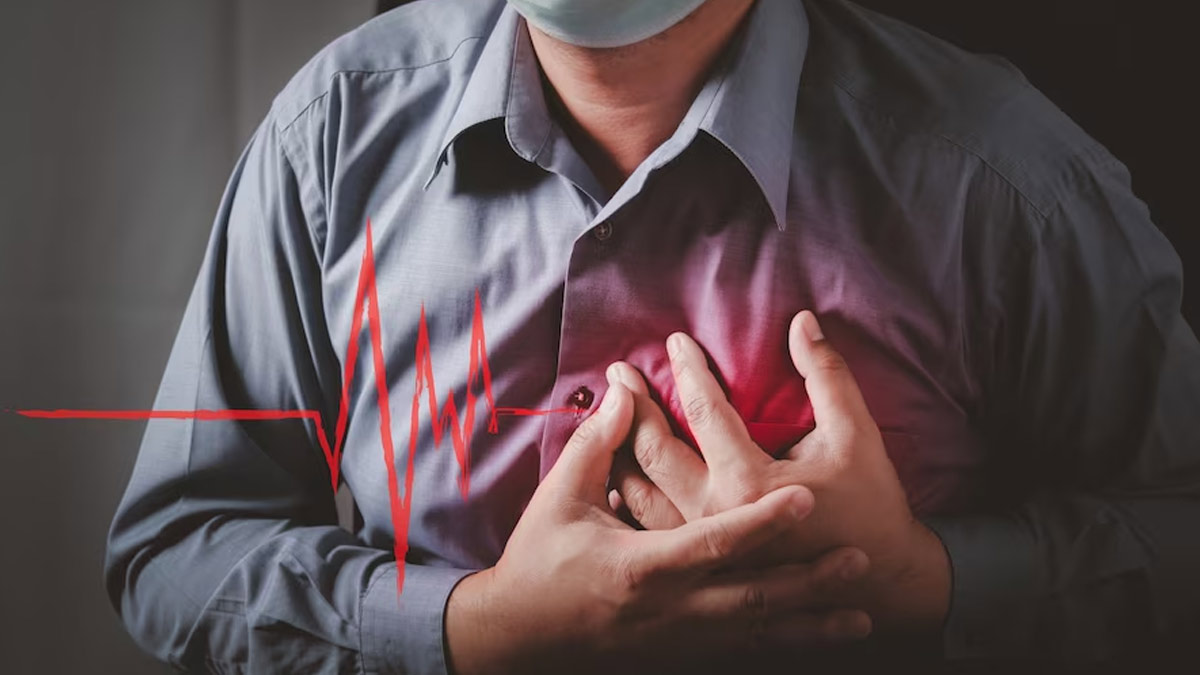
High cholesterol, particularly high levels of LDL (low-density lipoprotein) cholesterol, often dubbed as the "bad" cholesterol, is a significant concern for men's health. It's a silent condition that typically doesn't present specific symptoms, especially at night. However, elevated cholesterol can lead to various health issues, including atherosclerosis, which involves the hardening and narrowing of arteries, potentially causing symptoms that manifest particularly during nighttime.
Table of Content:-
Unusual Signs of High Bad LDL Cholesterol
To understand these unusual signs that can aid in early detection and management of high LDL cholesterol levels, we spoke to our expert Dr Shubendu Mohanty, Senior Cardiologist - Sharda Hospital. Here is what he shared with us.
1. Chest Pain
One of the most common symptoms associated with elevated cholesterol levels, particularly at night, is chest pain. This pain may occur due to reduced blood flow to the heart caused by narrowed arteries, a condition known as coronary artery disease. Chest pain, especially during nighttime, should never be ignored and warrants immediate medical attention.
2. Shortness of Breath
Difficulty in breathing or shortness of breath, especially during sleep, can also be indicative of high cholesterol levels. This symptom may occur due to reduced oxygen supply to the heart and other organs caused by narrowed arteries, leading to inadequate blood circulation.

3. Fatigue
Feeling excessively tired or fatigued during the day or experiencing difficulty in sleeping at night can be associated with high cholesterol levels. Poor blood circulation due to narrowed arteries can lead to inadequate oxygen supply to tissues and organs, resulting in fatigue and sleep disturbances.
Also Read: Struggling with Constant Itching in Your Ears? Expert Shares What May Be Causing It
4. Yellowish Deposits Around Eyes
Xanthelasma, yellowish deposits around the eyes, is a common sign of high LDL cholesterol levels. These deposits, typically seen on the eyelids, are often indicative of lipid disorders and can serve as a visual clue for underlying cholesterol abnormalities.

5. Grey or White Rings Around Cornea
Arcus senilis, grey or white rings around the cornea, may also indicate high cholesterol levels, especially in individuals under 45 years of age. This condition is caused by cholesterol deposits in the eye's cornea and can be associated with elevated lipid levels.
6. Unknown Soreness or Cramping in Calves
Experiencing unexplained soreness or cramping in the calves, particularly after exercising, could be a sign of peripheral arterial disease (PAD). PAD is associated with narrowed arteries due to the buildup of plaque, which is often linked to high LDL cholesterol levels.
Also Read: Nurturing Mental Health: Strategies for Emotional Well-being During Ramadan Fasting
7. Thyroid Dysfunction
Thyroid hormones and cholesterol have a reciprocal relationship. Elevated LDL cholesterol levels can be a symptom of hypothyroidism, an underactive thyroid gland. Conversely, high LDL cholesterol levels can impact thyroid function. Therefore, individuals with unexplained hypothyroidism may benefit from cholesterol level checks to assess for underlying lipid abnormalities.
A Final Word
"While high cholesterol typically doesn't manifest with specific symptoms at night, certain unusual signs may indicate elevated LDL cholesterol levels and associated health risks. It's essential for men, especially those with risk factors such as a family history of cardiovascular disease, obesity, or unhealthy lifestyle habits, to be vigilant about their cholesterol levels and seek medical evaluation if they experience any concerning symptoms. Early detection and management of high LDL cholesterol are crucial for preventing cardiovascular complications and promoting overall health and well-being," Dr Mohanty concluded.
Also watch this video
How we keep this article up to date:
We work with experts and keep a close eye on the latest in health and wellness. Whenever there is a new research or helpful information, we update our articles with accurate and useful advice.
Current Version